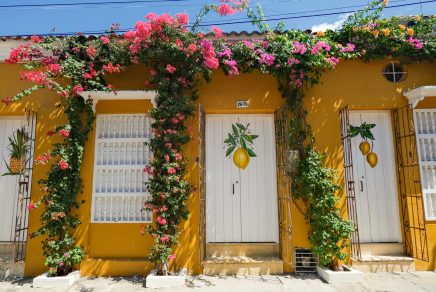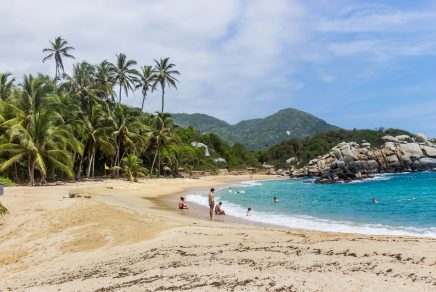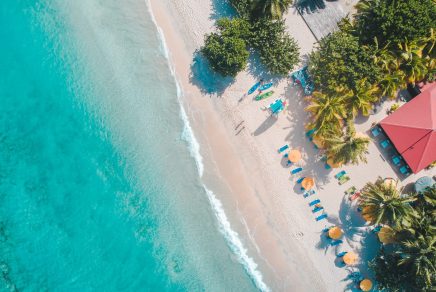For us, traveling is synonymous with wonder; it’s a gateway to the world. At Transat, our employees are passionate about travel and live this love for adventure and discovery every day. Nothing brings us more joy than sharing our passion for travel and the destinations we’ve fallen in love with. Recently, we accompanied Leanne, our Flight Attendant who was just promoted to Flight Director, to Colombia to help you discover a piece of this naturally and culturally rich destination. We begin our journey in the enchanting Old Town Cartagena, once known as Cartagena de Indias during the colonial era.
So what are the best things to do in Cartagena? Roam the streets and eat. Visit Isla Baru nearby. Explore artsy Getsemani. It’s up to you!
Content is inaccessible
To view this content, modify your consent preferences.
You’ll find the Old Town of Cartagena nestled within its UNESCO World Heritage-listed fortifications, Las Murallas. Built over two centuries, these walls were designed to protect the rich port city from repeat attacks by enemy armies and pirates.
As you explore this part of the city, the vibrant colonial architecture immediately captures your attention. Naturally, strolling through the streets and getting pleasantly lost is the top activity in Cartagena. Along the way, make sure to stop at these must-visit spots inside Las Murallas.
Portal de los Dulces
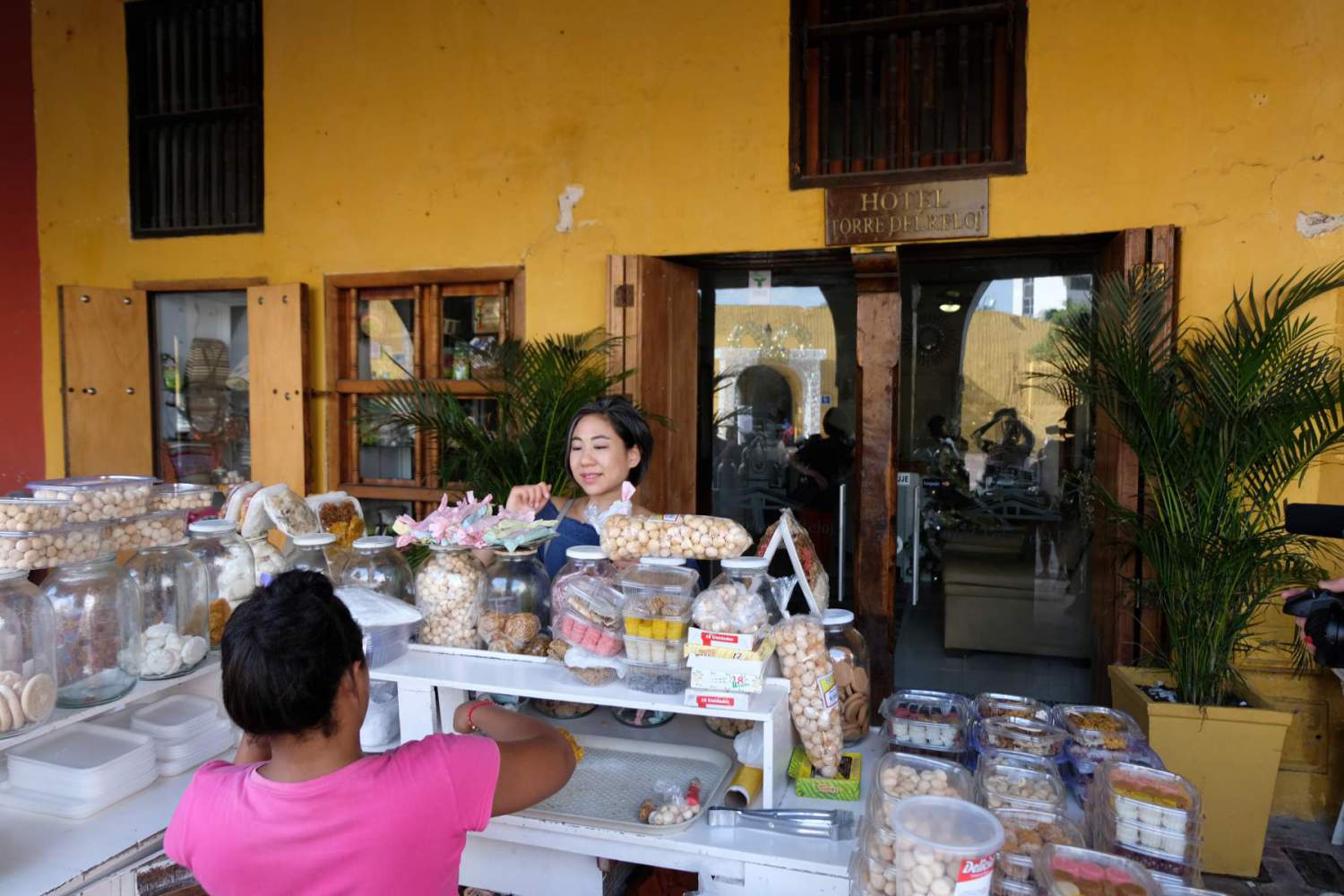
Want to taste local treats? Head to the Portal de los Dulces on the Plaza de los Coches, the triangular square near the famous Torre del Reloj, where shopkeepers sell handmade candies. Indulge in sugarcane pastries wrapped in pretty pastel paper, sugar and coconut biscuits, sweetened caramelized milk treats and much more.
Torre del Reloj
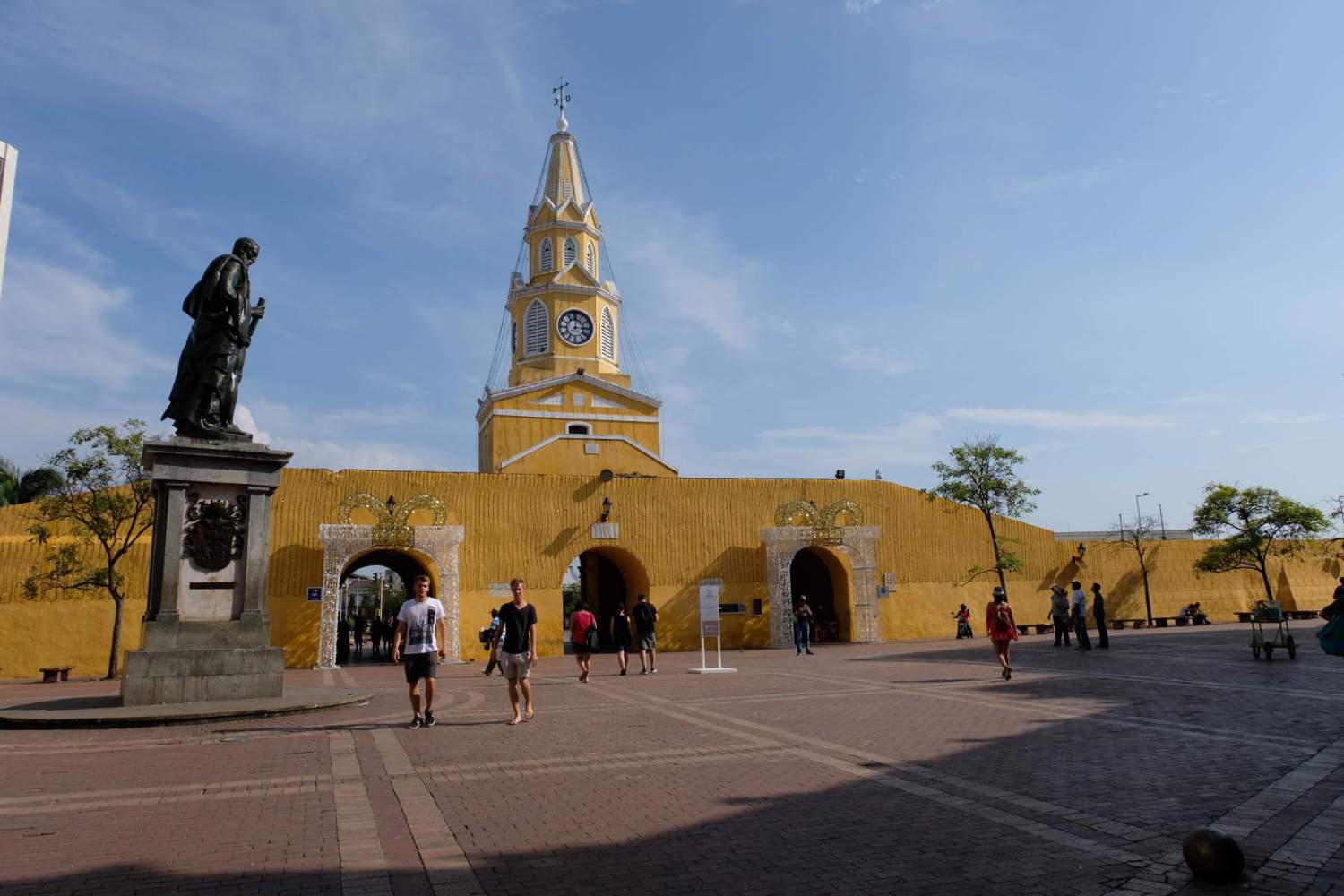
First, Cartagena’s most famous landmark, Torre del Reloj, or the Clock Tower, was once the main gateway to the old city. This entrance connects the Old Town to the hip Getsemaní neighborhood. Situated right in front of the clock inside Las Murallas, Plaza de los Coches is particularly lively at night. While here, take the opportunity to admire the work of artisans or taste fruit from one of the Palenqueras, women dressed in colorful clothes walking with baskets of fresh papayas, mangoes, pineapples, and melons on their heads.
Época Cafe
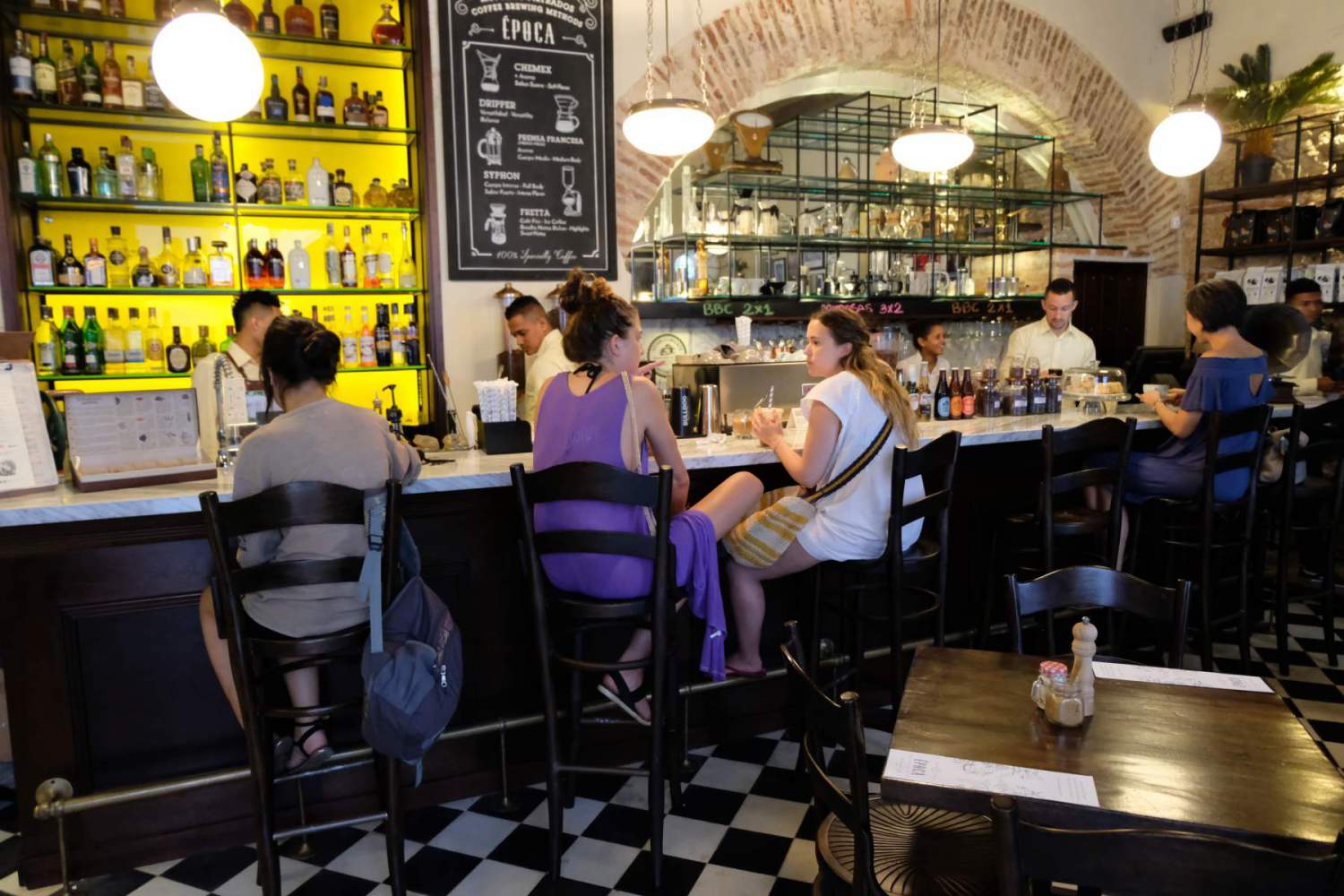
Coffee lovers are definitely pampered in Colombia, the world’s fourth largest coffee producer. Here, coffee is delicious everywhere. At Época Cafe, you can sit at the counter and chat with the staff or grab a table and enjoy its almost European atmosphere. The coffee, prepared with care, will delight your taste buds. Order yours like a local: “tinto” (black with sugar) or “con leche” (with milk).
Plaza San Pedro Claver
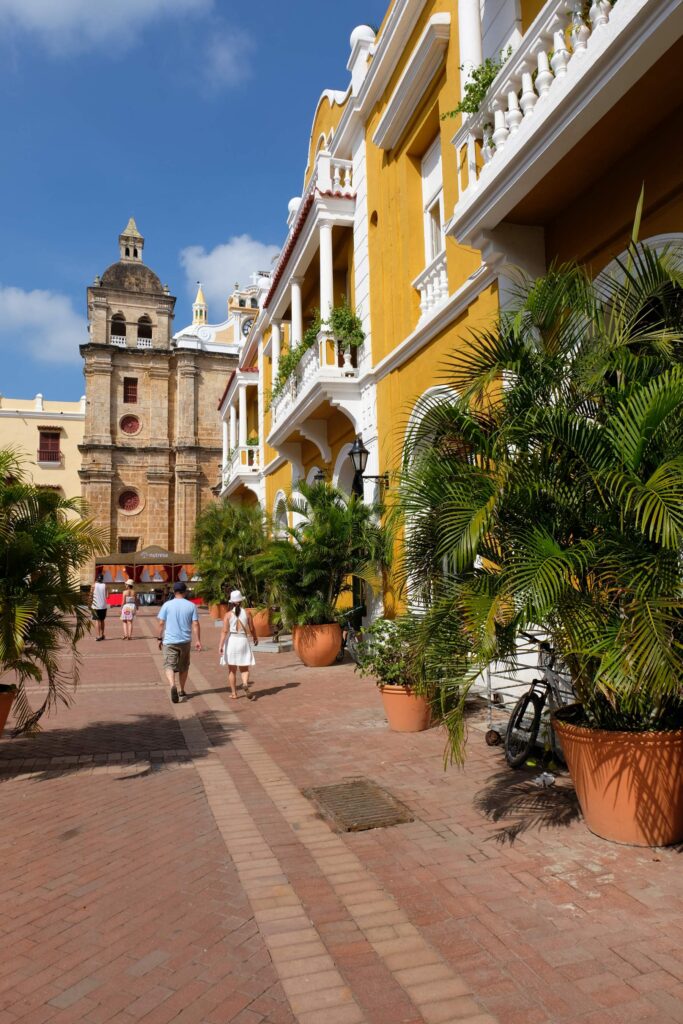


Next, named in honor of the first Colombian canonized by the Catholic Church who preached to black slaves, and facing the shrine of the same name, the imposing Plaza San Pedro Claver is home to several shops, restaurants, and local artisans.
The Santuario San Pedro Claver gardens
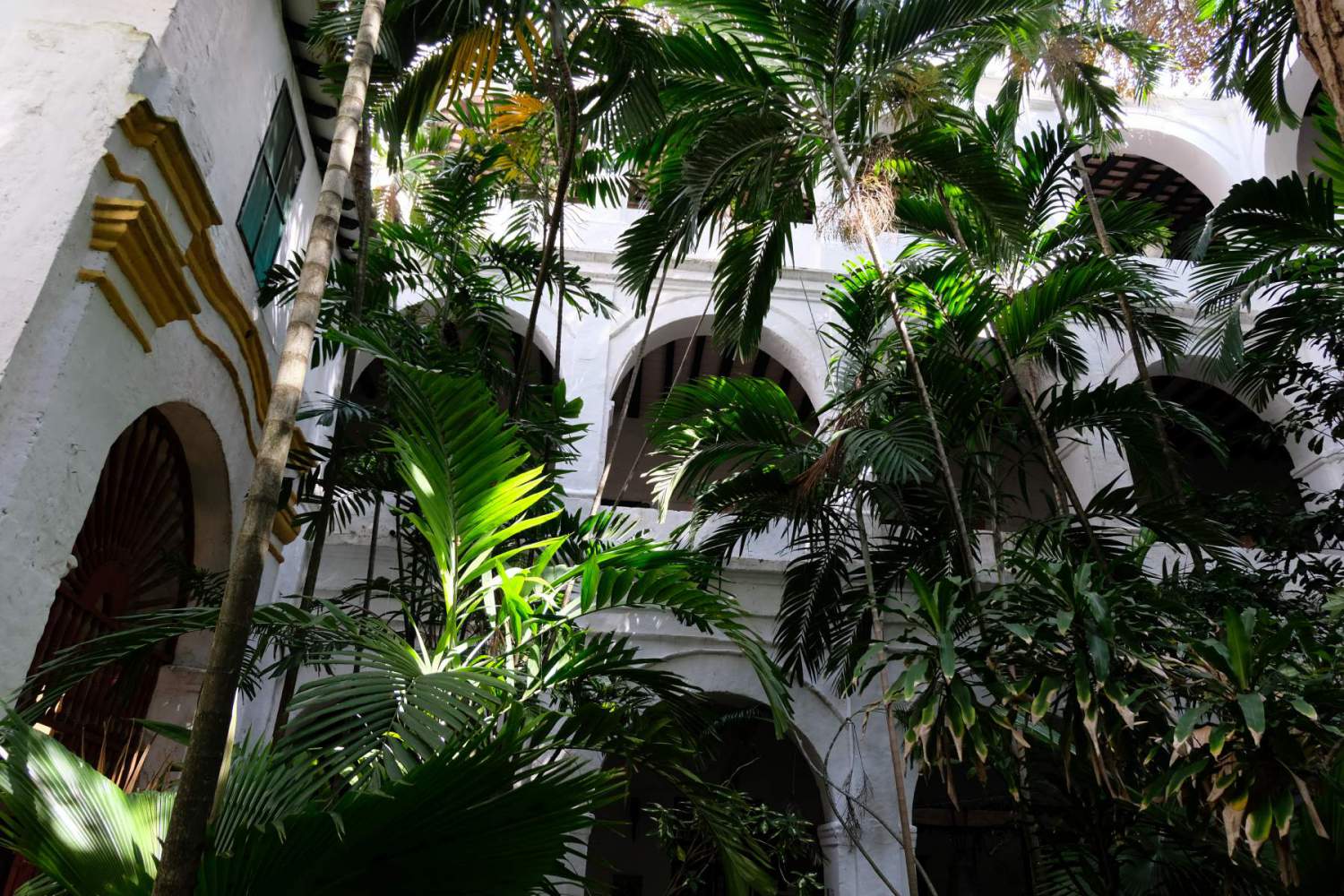
Visiting a destination’s churches often lets us in on a piece of the country’s history that isn’t always found in guidebooks. The Sanctuary of San Pedro Claver is no exception.
However, hidden behind the sanctuary’s imposing facade is a courtyard adorned with colonial architecture and lush gardens. These spacious gardens are the perfect haven for a break from Cartagena’s hustle and bustle.
Lined with white arches, this spot is ideal for snacking, reading in the shade, or simply admiring its beauty.
Lunch at Mistura restaurant
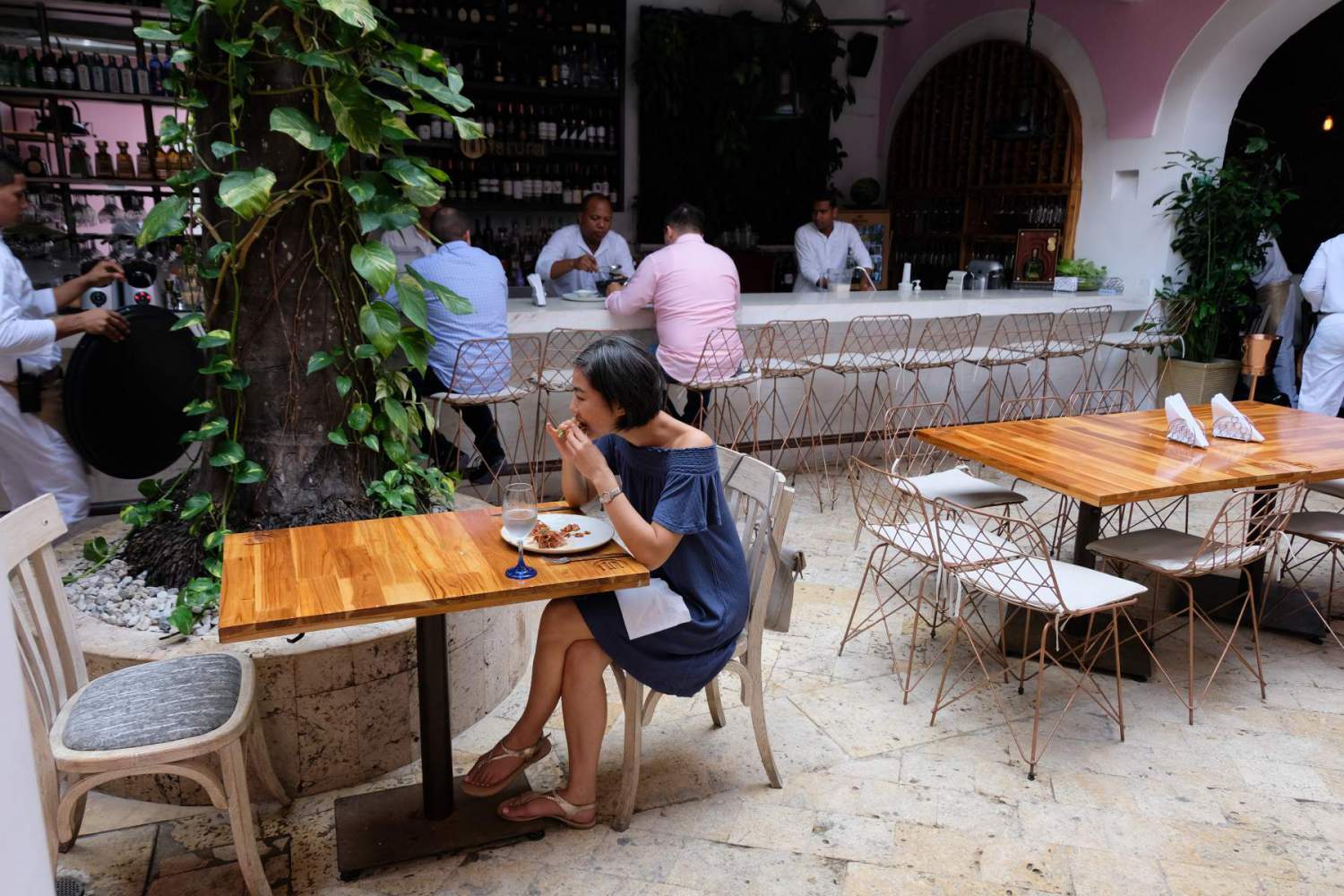
For example, in the north-central part of Old Town Cartagena, you’ll discover a charming restaurant that’s truly a hidden gem. Leanne particularly loved their use of fresh ingredients and the creativity of Mistura’s chef, who has crafted an inspiring menu centered around fish and seafood. Plus, their attentive service adds the finishing touch to this delightful experience.
Cafe del Mar

Cartagena is filled with great spots for watching the sunset. Although very popular and touristy, Cafe del Mar is one of the best places, as it offers panoramic views of the Old Town, the modern city, Bocagrande and the ocean. Drinks here are not cheap, but the view and atmosphere are well worth it.
Casa Abba
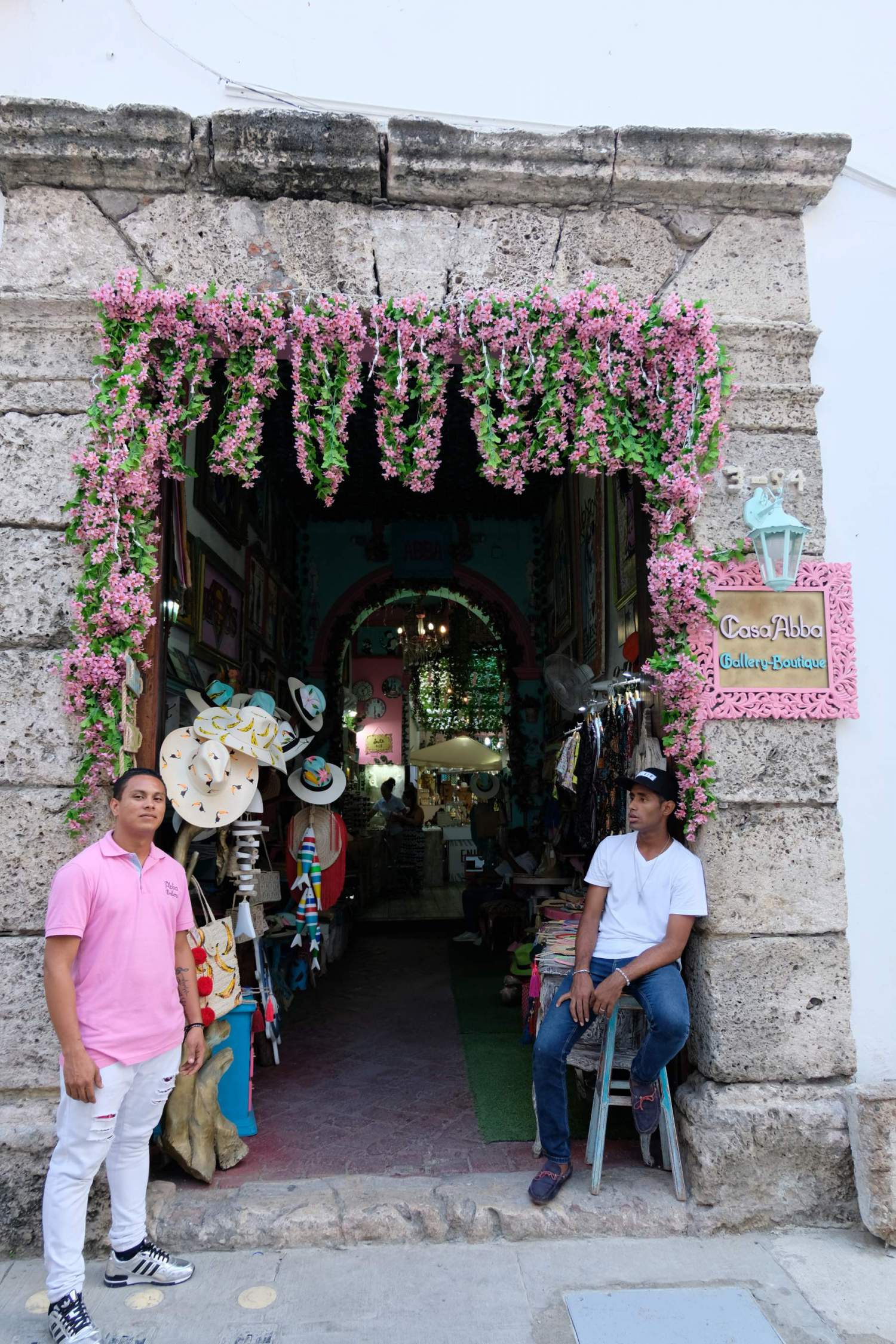
Finally, don’t forget to buy souvenirs for your loved ones back home! For us, and for Leanne, one place stands out: the beautiful and quaint Casa Abba Gallery-Boutique. This charming boutique includes about 20 artisans and merchants selling jewelry, clothing, and other unique souvenirs.



